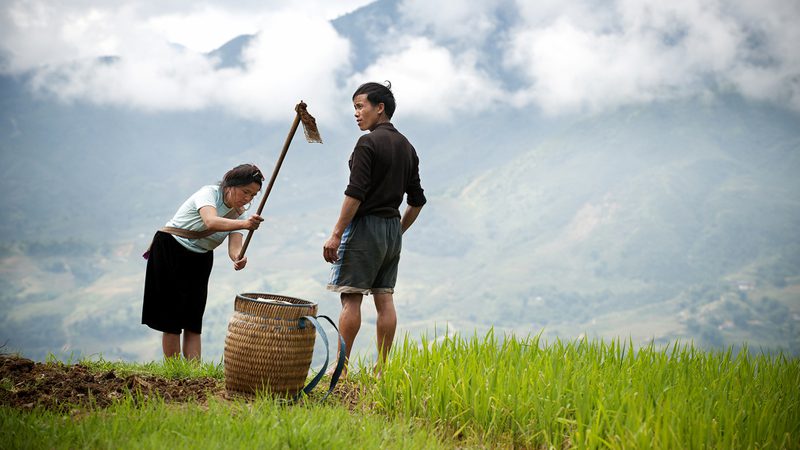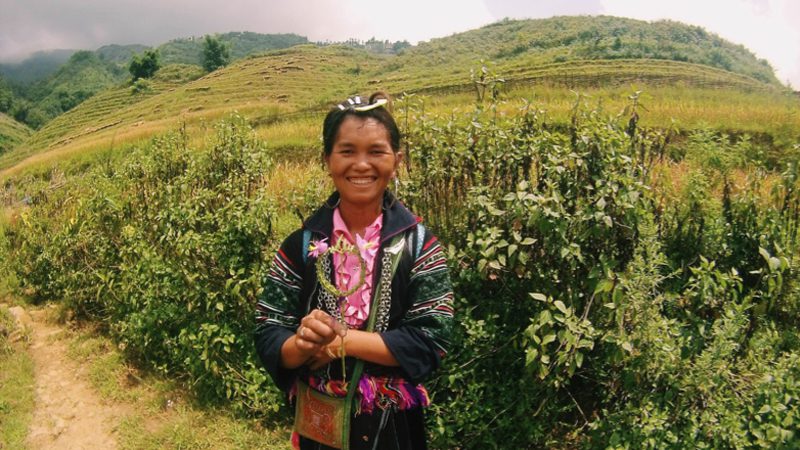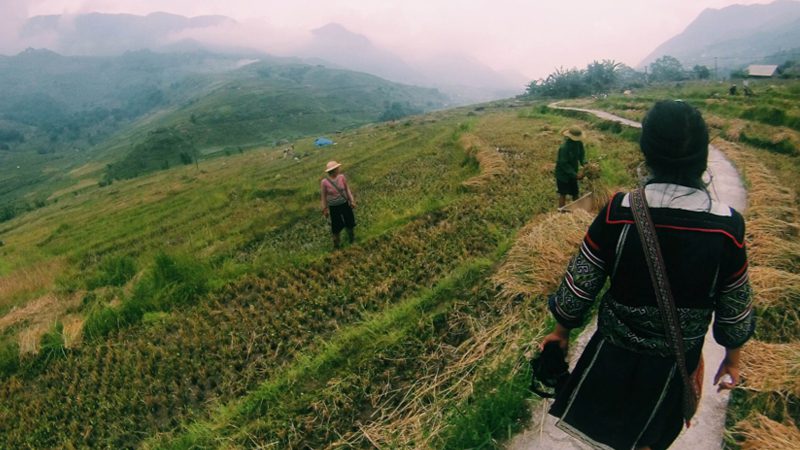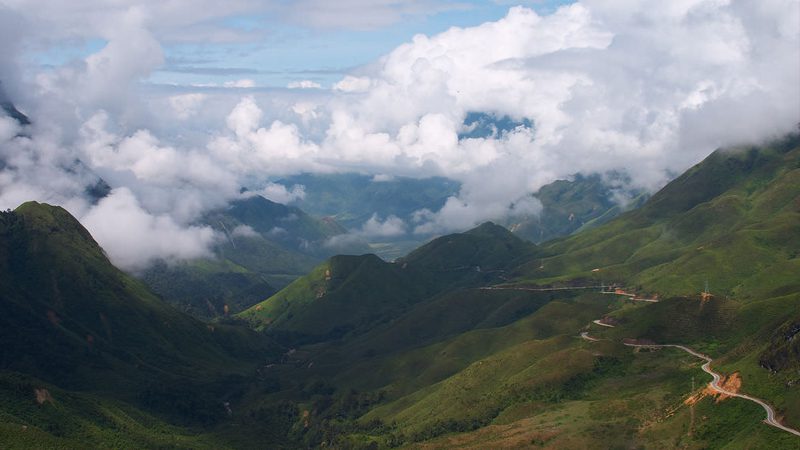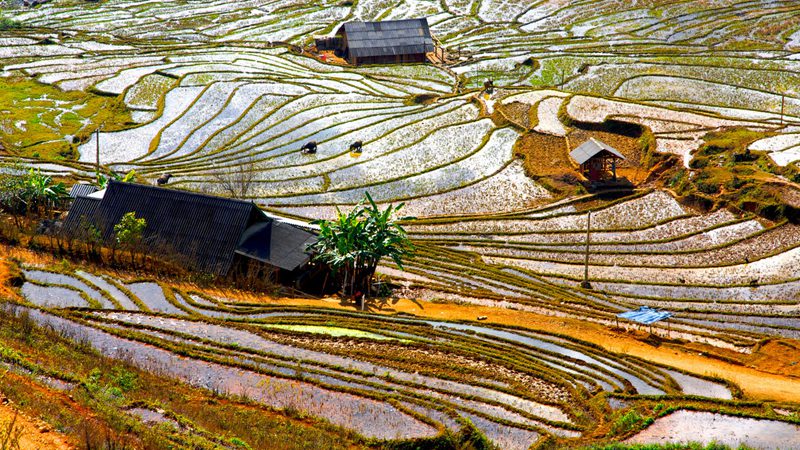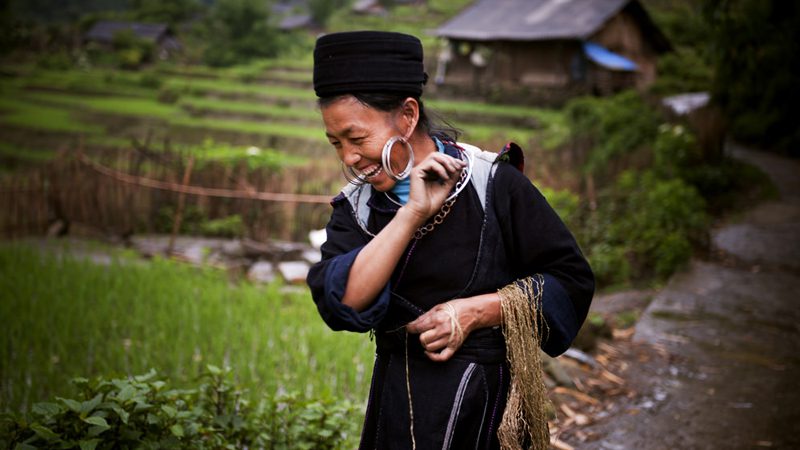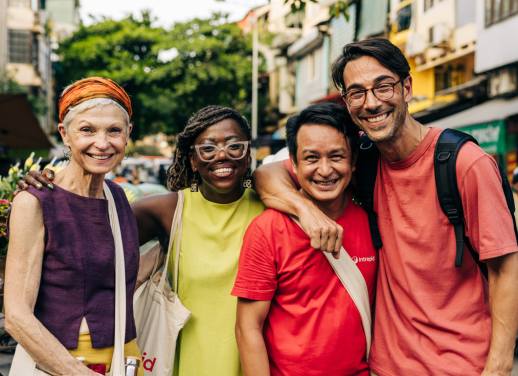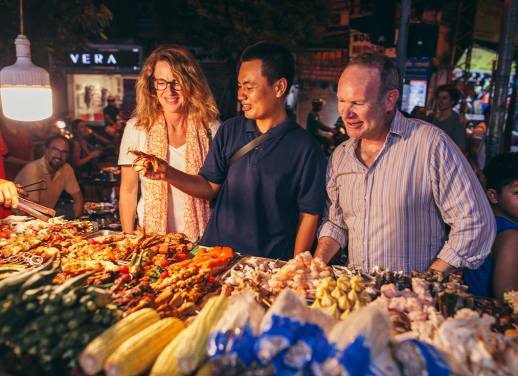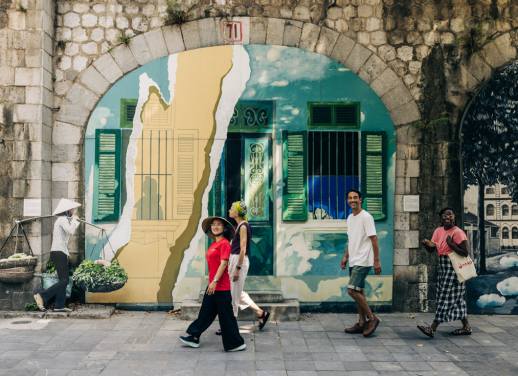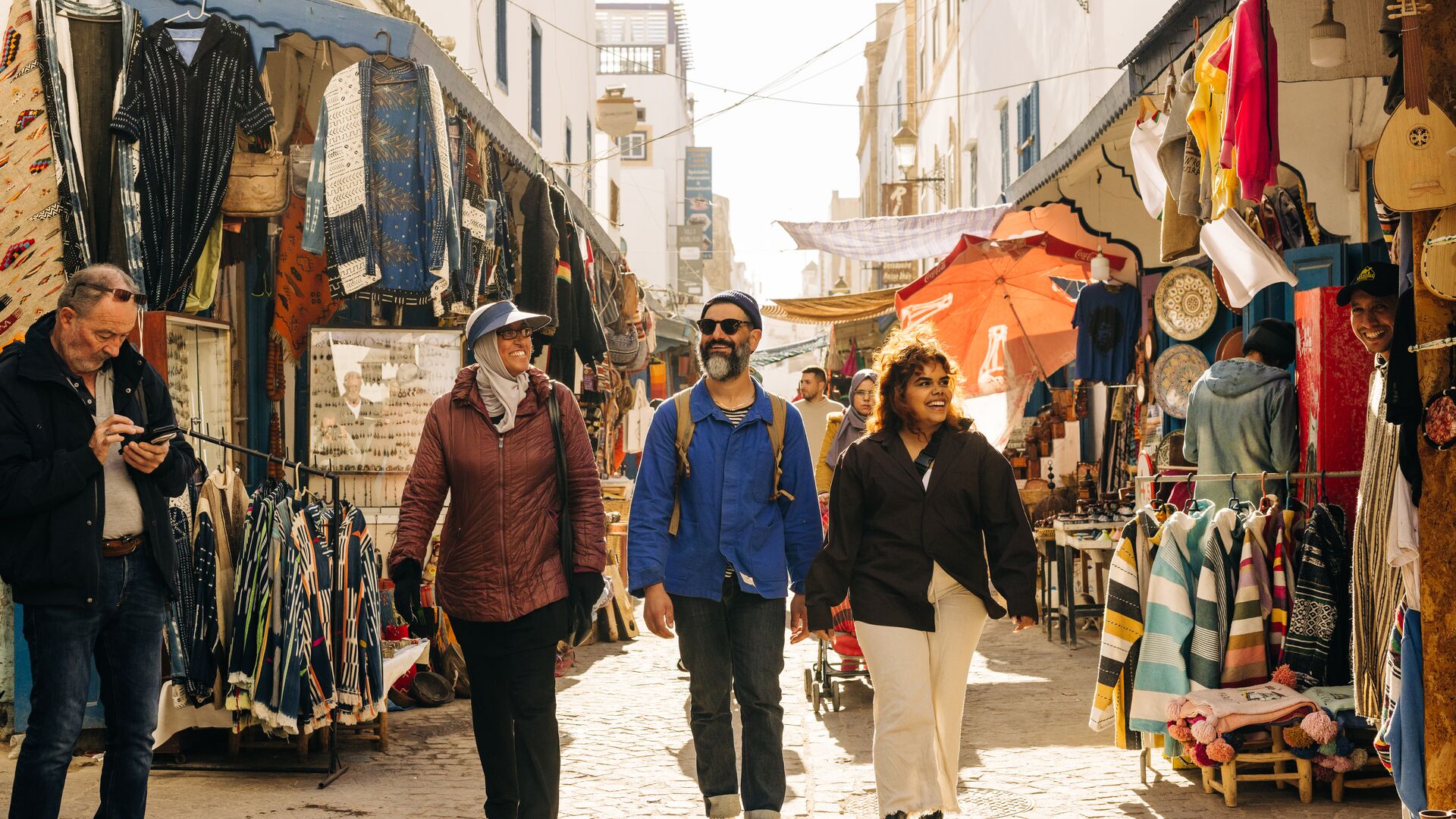There’s just something about Vietnam that’s always attracted me. I’m not quite sure if it was the images I saw of its Jurassic Park style jungles, or even just my early obsession with pho, but when a fellow traveller told me about his incredible journey trekking the northern Vietnamese hillsides of Sapa, I was set on going.
A few weeks later, I found myself boarding a small white van en route to Sapa with a close friend. After four hours spent winding back and forth up the mountain, we were eventually greeted with a quick breakfast in the Sapa Summit Hotel. We guzzled down warm toast and coffee laced with sweet, condensed milk. Our tiny, vivacious guide met us there.
Her name was La, and she was wrapped head to toe in traditional Hmong clothing—an intricately embroidered black dress with bright bands of colour. Her long black hair was pulled back tightly with a single silver clip, and a sweeping, infectious grin stretched across her face. Over the next two days, I never saw her without it.
As we put on our packs and headed out into the hills of Sapa, I got my first glimpse of something that, until then, I had only seen in my stash of National Geographic magazines. Each hill was blanketed with rice paddies saturated in glistening water, dotted with workers harvesting crops. An hour into the trek and we were met by water buffalo passing us along the trail. As I stumbled to keep my cool and quickly make my way around them, La simply bobbed ahead, content and unfazed.
We continued walking, and we started to talk about La’s life. She had four kids and a husband at home. When I asked her what her husband did, she jokingly said, “My husband? Oh, he just relaxes at home. I do all the work!” I had a sneaking suspicion she was telling the truth. She told us she leads hikes every day, and only takes three or four days off a year.
Once we reached the homestay – where we were going to sleep – she was going to have to hike back the four hours we just trekked to be with her family. She told us that she had led hikes up until she was 8 months pregnant with each of her children. Speaking with La, I could tell she was tenacious. I admired her a lot.
As we neared our homestay, we passed a group of four women carrying sacks of rice on their backs down an unstable slope. The packs must have weighed at least 50 pounds, but they zipped by us almost effortlessly. Not only were they dressed in the thick, traditional Hmong clothes that don’t allow for much ventilation, but they each wore plastic, yellow sandals that had basically zero grip. Here I was skidding and slipping in my padded Nike trail shoes.
Our homestay was a delightful home, nestled in the Sapa hillside and made out of bamboo. The owners spoke almost no English, but we were still able to communicate through simple gestures and smiles.
They cooked us a full dinner, complete with rice, tofu curry and morning glory. As we finished eating, the owner of the homestay pulled out a bottle of rice wine he had brewed himself. In one swoop, he threw five small glasses on the table and starting pouring out shots for everyone. One by one, we yelled the Vietnamese cheers, “Một, hai, ba, vô!” and threw back the celebratory drink.
Once our bellies were full of rice wine, we were shown upstairs to where we would be sleeping. The room was little and the mats were thin, but it was all we needed. It was perfect.
When we woke up the next morning, La had returned to lead us on our second day. She had warned us today would be more strenuous, and within minutes we were hiking up what seemed like a ninety-degree hill. To say it was difficult was an understatement. The ground was unstable. There was no clearly defined path. My friend and I constantly found ourselves having to help pull each other up. After a gruelling hour, we finally made it to the top, and was it worth it. We could see almost the entire village of Sapa burrowed in between two steep mountains. We each took a few moments to let the scene register. La walked over and told us what we had to do next: a group selfie.
As we trekked down to our final destination, I got to thinking: I had only seen three other tourists on our two-day journey. In today’s world, overrun with tourist sites and overpriced souvenirs, I felt like I had hit the jackpot. I was truly living a day in the life of a Hmong woman – and it felt real.
Having spent two months in Southeast Asia, I often find myself thinking back to this single moment in Sapa. Today I live in Austin and work for a home improvement company, but I still wake up in the morning and think about La and the extremely friendly people of Sapa.
Experience some traditional Hmong hospitality on Intrepid’s Sapa Adventure small group trip.

